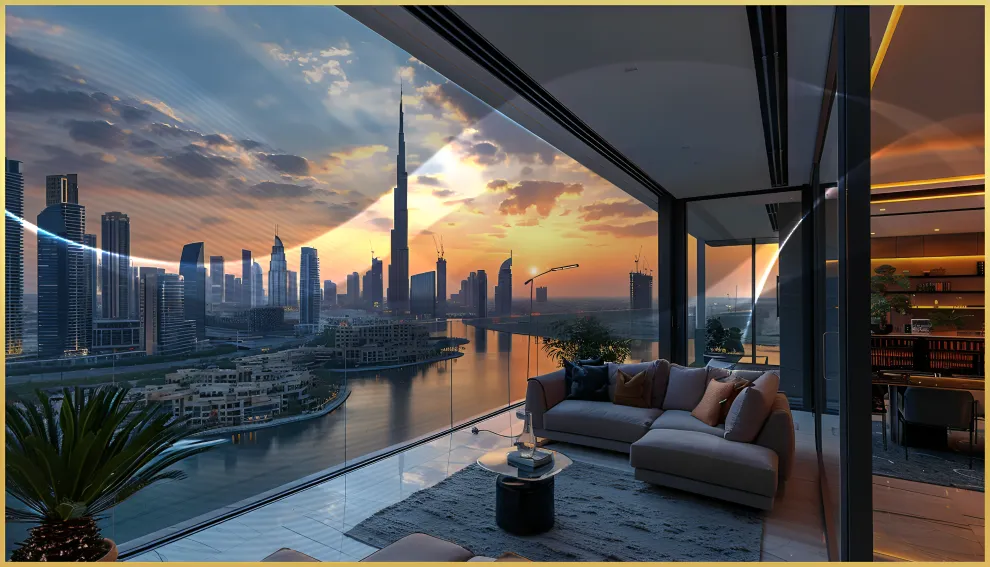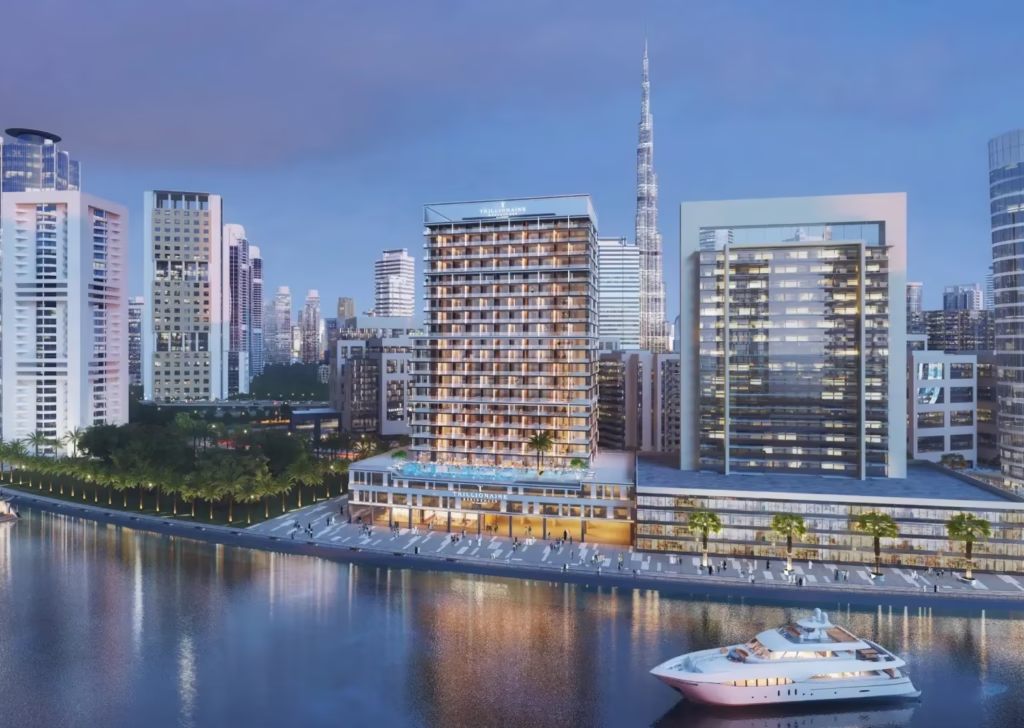
The Dubai rental market has always been dynamic, shaped by constant evolution in demand, infrastructure, and investor sentiment. As 2025 unfolds, this transformation is accelerating faster than ever. Driven by population growth, government initiatives, and global attention, the city’s rental scene is entering an era of smart growth and long-term stability.
If you’re an investor, landlord, or tenant in Dubai, understanding these trends is the key to staying ahead of the curve. Let’s explore what’s driving the Dubai rental market in 2025—and where the best opportunities lie.
Dubai continues to attract residents from around the world. The UAE’s population surpassed 10 million in 2024, with a significant portion choosing Dubai as their home due to its global connectivity, tax-free income, and lifestyle appeal.
Expat professionals, digital nomads, and entrepreneurs are increasingly settling in Dubai for its safety, business opportunities, and evolving visa options like the Golden Visa and Remote Work Visa. This sustained influx has driven steady rental demand across both high-end and mid-market segments.
In particular, neighborhoods offering proximity to business hubs—such as Downtown Dubai, Business Bay, and Jumeirah Lake Towers—remain in constant demand, ensuring stable occupancy rates for landlords.
While luxury properties continue to attract international investors, there’s a noticeable shift toward mid-market rentals. Tenants today are seeking quality housing at sustainable prices, and developers are responding with projects in areas like Dubai Hills, Mirdif Hills, and Al Furjan.
The demand for affordable yet modern communities reflects a maturing rental market—where lifestyle and convenience matter more than opulence. These areas are particularly attractive to families and young professionals, offering access to amenities without the premium price tag of Downtown or Palm Jumeirah.
This transition also indicates strong rental yield potential for investors, as affordable properties tend to deliver higher returns due to lower entry prices and consistent demand.
One of the most striking trends in 2025 is the integration of technology in property management and tenant engagement. From virtual property tours to AI-based pricing tools and digital contracts, Dubai’s rental landscape is becoming smarter and more efficient.
Landlords now use automated listing platforms, smart locks for contactless viewing, and online payment systems for smoother transactions. Meanwhile, tenants enjoy greater transparency and convenience when searching for homes.
The introduction of proptech solutions has also reduced rental fraud and increased trust in the market. For investors, this means faster leasing cycles and data-backed decision-making—a significant advantage in a competitive rental environment.

Co-living spaces are gaining strong traction in Dubai, driven by millennials and digital nomads seeking flexibility and community. These modern shared accommodations offer fully furnished rooms, communal amenities, and short-term contracts—all bundled with one monthly payment.
Areas like Dubai Marina, JLT, and Al Barsha are emerging as hubs for co-living projects catering to remote workers and young professionals. The model offers affordability for tenants and high yields for operators.
Additionally, flexible lease options—such as monthly or quarterly rentals—are becoming more popular as tenants look for short-term mobility and landlords adapt to a transient population. This flexibility trend aligns with Dubai’s growing appeal as a global lifestyle destination.
The short-term rental segment, powered by platforms like Airbnb and Booking.com, is thriving in Dubai’s tourism-driven market. After the success of Expo 2020, Dubai has cemented its status as a global hospitality hub, and the upcoming Expo 2025 in Osaka is expected to renew international attention toward the UAE.
Short-term rentals in tourist hotspots—Downtown Dubai, Palm Jumeirah, Dubai Marina, and Bluewaters Island—are delivering impressive occupancy rates.
Many landlords are converting long-term rentals into holiday homes to capitalize on higher nightly rates. However, with stricter licensing requirements by the Dubai Tourism and Commerce Marketing (DTCM), only compliant operators can sustain growth in this sector.
Sustainability is no longer just a buzzword—it’s a rental decision driver. Dubai’s Vision 2040 Urban Master Plan has accelerated the development of eco-conscious communities featuring green spaces, energy-efficient buildings, and sustainable amenities.
Tenants increasingly prefer homes with energy-saving systems, solar panels, or smart cooling technologies that reduce utility costs. Developments like The Sustainable City, Tilal Al Ghaf, and Dubai Creek Harbour are setting benchmarks for eco-friendly living.
For investors, these sustainable communities promise long-term tenant retention and property value appreciation, as more renters prioritize greener lifestyles.
Despite the shift toward affordability, the luxury rental market continues to perform robustly. Ultra-high-net-worth individuals relocating from Europe and Asia are fueling demand for luxury villas and branded residences in areas like Palm Jumeirah, Emirates Hills, and Jumeirah Bay Island.
High-end apartments offering waterfront views and private amenities are achieving record rental prices. Investors in luxury segments benefit not only from high rents but also from prestige-driven capital growth.
Furthermore, Dubai’s appeal as a safe haven for wealth preservation continues to attract elite tenants willing to pay premium prices for exclusive living experiences.

One of the strongest pillars of Dubai’s rental market growth is its transparent and evolving regulatory framework. The Dubai Land Department (DLD) and Real Estate Regulatory Authority (RERA) continuously refine laws to protect both tenants and landlords, creating a balanced and investor-friendly environment.
Initiatives like Ejari registration, digital tenancy contracts, and rental dispute resolution centers have increased confidence in property leasing. Investors now enjoy a more predictable rental landscape, where rules and rights are clearly defined.
This transparency has positioned Dubai as one of the most investor-secure markets in the region.
Major infrastructure developments continue to push demand into new parts of Dubai. Projects like the expansion of Dubai Metro, the completion of Dubai Creek Tower, and the ongoing growth of Dubai South are reshaping rental demand patterns.
Dubai South, for example, is emerging as a future hotspot due to its proximity to Al Maktoum International Airport and the Expo City district. Similarly, areas around the new Etihad Rail line are expected to witness rental appreciation as connectivity improves.
Investors who identify these emerging pockets early are likely to benefit from both capital growth and rental income.
The pandemic changed how people perceive their living spaces, and this continues to influence Dubai’s rental trends. Tenants now prioritize larger homes, private outdoor areas, and work-from-home spaces.
Developments offering green surroundings, community facilities, and easy access to schools are seeing higher occupancy rates. This shift benefits suburban areas such as Arabian Ranches, Mudon, and Town Square, where villas and townhouses offer greater comfort and privacy.
For landlords, adapting to these evolving tenant preferences—by adding modern furnishings, flexible layouts, and better amenities—can make properties more competitive in 2025’s market.
Dubai continues to offer some of the most attractive rental yields globally, averaging between 5% and 8%, depending on the area. Compared to cities like London, New York, or Singapore, Dubai provides investors with a better balance between property value and rental income.
Mid-market areas such as JVC, Dubai Sports City, and Discovery Gardens lead the yield charts, thanks to affordable entry prices and steady tenant demand.
This consistent performance, combined with no property tax and ease of ownership for foreigners, keeps Dubai at the forefront of global real estate investment.
As Dubai continues its upward trajectory, several trends are expected to shape its rental market beyond 2025:
These developments point toward a maturing, tech-driven, and globally attractive rental ecosystem that benefits both investors and tenants alike.
The Dubai rental market in 2025 is a landscape of opportunity—driven by innovation, policy stability, and international appeal. Whether you’re an investor seeking long-term returns or a landlord aiming for consistent occupancy, staying informed about these emerging trends is essential.
Dubai’s rental sector is no longer just about location—it’s about lifestyle, technology, and adaptability. Those who align with these evolving market forces will not only secure higher yields but also become part of Dubai’s ever-growing real estate success story.
Do Follow Estate Magazine on Instagram
Maximize Rental Yield in Dubai: Proven Tips for Smart Investors
